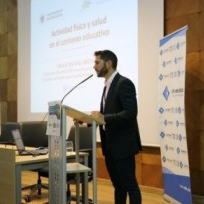Competitive Anxiety and Health Issues in Youth Sports
A special issue of Sustainability (ISSN 2071-1050). This special issue belongs to the section "Health, Well-Being and Sustainability".
Deadline for manuscript submissions: closed (30 November 2020) | Viewed by 23337
Special Issue Editors
Interests: human dynamics (group dynamics); performance and psychological and social variables related with sports
Special Issues, Collections and Topics in MDPI journals
Interests: exercise psychology; sports science; coaching; exercise science; physics education self-efficacy; health science; pre-service teachers; elementary education; motivational psychology
Special Issues, Collections and Topics in MDPI journals
2. PROFITH “PROmoting FITness and Health through physical activity” research group, Department of Physical Education and Sports, Faculty of Sports Sciences, University of Granada, Granada 18071, Spain.
Interests: physical activity; physical fitness; academic achievement; brain function; human behavior
Special Issues, Collections and Topics in MDPI journals
Special Issue Information
Dear Colleagues,
Since the last third of the last century, the positive psychology paradigm has permeated widely throughout the academic approach to sport, especially when regarding younger participants, but also for the elite athletes. However, in more recent times, a relatively significant part of the research emphasis has been transferred to the prevention of the possible negative and "collateral" effects associated with the practice of sport, studied in the same kind of populations.
Thus, the amount of research, the number of publications, and the quality and interest of the intervention programs based on this approach have been increasing, addressed to analyze them, to know what factors trigger them, and try to prevent—if possible—their occurrence.
Therefore, this topic can motivate scholars to update their knowledge regarding the relationships between competitive anxiety and other health problems associated with sports, both in grassroots and elite sports.
With these ideas in mind, we want to invite the researchers and scholars to contribute to this Special Issue of Sustainability, with the aim of forming a solid piece of information that can help—from different perspectives—to consolidate this specific field of study and application of the sport psychology.
Prof. Dr. Alexandre García-Mas
Prof. Dr. Adrià Muntaner Mas
Dr. Francisco Javier Ponseti Verdaguer
Prof. Dr. Jeanette M. López-Walle
Guest Editors
Manuscript Submission Information
Manuscripts should be submitted online at www.mdpi.com by registering and logging in to this website. Once you are registered, click here to go to the submission form. Manuscripts can be submitted until the deadline. All submissions that pass pre-check are peer-reviewed. Accepted papers will be published continuously in the journal (as soon as accepted) and will be listed together on the special issue website. Research articles, review articles as well as short communications are invited. For planned papers, a title and short abstract (about 250 words) can be sent to the Editorial Office for assessment.
Submitted manuscripts should not have been published previously, nor be under consideration for publication elsewhere (except conference proceedings papers). All manuscripts are thoroughly refereed through a single-blind peer-review process. A guide for authors and other relevant information for submission of manuscripts is available on the Instructions for Authors page. Sustainability is an international peer-reviewed open access semimonthly journal published by MDPI.
Please visit the Instructions for Authors page before submitting a manuscript. The Article Processing Charge (APC) for publication in this open access journal is 2400 CHF (Swiss Francs). Submitted papers should be well formatted and use good English. Authors may use MDPI's English editing service prior to publication or during author revisions.
Keywords
- Anxiety
- Prevention
- Health
- Grassroot sports
- Elite athletes
- Psychosocial factors
Benefits of Publishing in a Special Issue
- Ease of navigation: Grouping papers by topic helps scholars navigate broad scope journals more efficiently.
- Greater discoverability: Special Issues support the reach and impact of scientific research. Articles in Special Issues are more discoverable and cited more frequently.
- Expansion of research network: Special Issues facilitate connections among authors, fostering scientific collaborations.
- External promotion: Articles in Special Issues are often promoted through the journal's social media, increasing their visibility.
- Reprint: MDPI Books provides the opportunity to republish successful Special Issues in book format, both online and in print.
Further information on MDPI's Special Issue policies can be found here.








